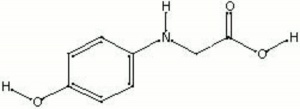Difference between revisions of "Glycin"
Jump to navigation
Jump to search
(username removed) |
(username removed) |
||
| Line 40: | Line 40: | ||
* ''The Merck Index'', Martha Windholz (ed.), Merck Research Labs, Rahway NJ, 10th edition, 1983 Comment: entry 4885 | * ''The Merck Index'', Martha Windholz (ed.), Merck Research Labs, Rahway NJ, 10th edition, 1983 Comment: entry 4885 | ||
| − | * | + | * Michael McCann, ''Artist Beware'', Watson-Guptill Publications, New York City, 1979 |
[[Category:Materials database]] | [[Category:Materials database]] | ||
Revision as of 06:30, 24 July 2013
Description
A white, crystalline powder used as a black and white photographic developer. Glycin is as used as a colorimetric detection of iron, phosphorus, and silicon.
Synonyms and Related Terms
p-hydroxyphenol aminoacetic acid; n-(4-hydroxyphenyl) glycine; photoglycine; glycine (photographic); Monazol; Ionyl
Other Properties
Soluble in alkalis and acids.
Slightly soluble in water, alcoho, acetone, ether, chloroform.
| Composition | C8H9NO3 |
|---|---|
| CAS | 122-87-2 |
| Melting Point | 240 (dec) |
| Molecular Weight | mol. wt. = 167.16 |
Hazards and Safety
Skin contact may cause irritation and allergies. Inhalation or ingestion may cause anemia, cyanosis, nausea, dizziness or difficulties in breathing.
Fisher Scientific: MSDS
Authority
- The Merck Index, Martha Windholz (ed.), Merck Research Labs, Rahway NJ, 10th edition, 1983 Comment: entry 4885
- Michael McCann, Artist Beware, Watson-Guptill Publications, New York City, 1979
